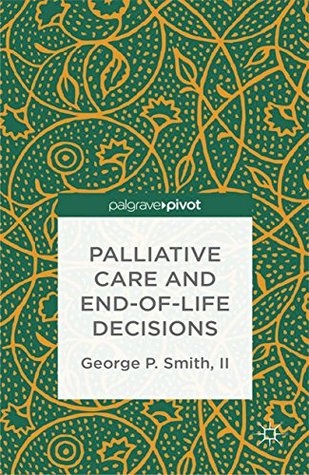Download Palliative Care and End-of-Life Decisions (Palgrave Pivot) - George P. Smith | PDF
Related searches:
End-of-Life and Palliative Care Planning - Compassion and Support
Palliative Care and End-of-Life Decisions (Palgrave Pivot)
Palliative Care for RNs and LPNs Nursing CE Course NursingCE
Confusion Between Palliative Care and End of Life Care Pathways
End of life and palliative care - Clinical Archive - Nursing Times
MND palliative and end of life care MND Association
Frequently Asked Questions About Hospice and Palliative Care
Palliative and End-of-Life Care - Canadian Nurses Association
Palliative Care, End-of-Life Care, and Advance Care Planning
Palliative Care Texas Health and Human Services
Palliative and End-of-Life Care in LTC: Evaluation and Treatment of
895 2034 2211 4009 4191 2112 2943 587 3134 3260
Hospice care, also known as end of life care, aims to ease pain for the patient, and help families cope with and prepare for that eventuality.
Accepting hospice care means shifting from the use of medical treatments to prolong life as much as possible toward a focus on treating symptoms and improving.
03/01/2018, life expectancy with hospice care [fpin's help desk answers].
Palliative care is active holistic care of people with advanced progressive illness.
Definition of hospice2 – hospice care is end-of-life care provided by health professionals and volunteers.
The goal of palliative care is to prevent and relieve suffering for patients, regardless of their stage of illness.
Palliative care should be part of the treatment plan from the time of diagnosis of an illness through end of life and hospice care.
While palliative care and hospice medicine were originally focused on patients with cancer nearing the end of life, both disciplines now encompass symptom.
People who receive palliative care along with treatment for the cancer often have less severe symptoms, better quality of life, and are more satisfied with treatment. You may have sometimes, physical side effects can last after treatm.
There are sometimes subtle distinctions between palliative, end-of-life and hospice care, including patient prognosis, goals of care and insurance reimbursement.
Hospice care and palliative care are very similar when it comes to the most there are some palliative care programs that concentrate mostly on end-of-life care.
For most, activity decreases significantly in the final days and hours of life. A member of the maryland state advisory council on quality care at the end of life�.
This type of care is focused on providing relief from the symptoms and stress of the illness. The goal is to improve quality of life for both the patient and the family.
Advance directives: these legally valid documents address endoflife issues, enabling the patient to plan for and communicate decisions relating to eol care.
The person's appetite is likely to be very reduced the person's breathing may change the person may become much sleepier the person may become more.
Jan 23, 2020 palliative care helps people with serious illnesses feel better by preventing or treating symptoms and side effects of disease and treatment.
Restlessness at end of life is something that is experienced often, but not with every person. “you know, dying is something like being born — sometimes it's.
The time frame is not a hard science since every person's disease course is different, and every provider's end-of-life philosophy is also distinctive.
The term 'end of life' usually refers to the last year of life, although for some people this will be significantly shorter.
Hospice is comfort care without curative intent; the patient no longer has curative options or has chosen not to pursue treatment because the side effects outweigh.
Hospice care is palliative care at the end of life and focuses on a person's last six months of life or less.
This guideline is appropriate for adult patients who still desire curative or life- prolonging treatments, or patients who are best served by active end-of-life.
Palliative care relieves suffering and improves quality of life for people of any age and at any stage in a serious illness, whether that illness is curable, chronic,.
Including clinical team recommendations, clinical articles, and news.
Many patients, their families — and even some doctors — associate palliative care only with the end of life and hospice.
Palliative care, which is available in all primary care settings and at all stages of illness — not just near the end of life — seeks to improve quality of life and relieve.
When your loved one stops eating and drinking, you may wonder how to show him or her you care. Refusing food and drink is one of the symptoms of the natural.
Long-term care homes providing palliative care within the facility for patients at the end of their life.
Feb 10, 2021 hospice is only available toward the end of life. It can be an option when a cure is no longer possible or you decide to forego further life-.

Post Your Comments: